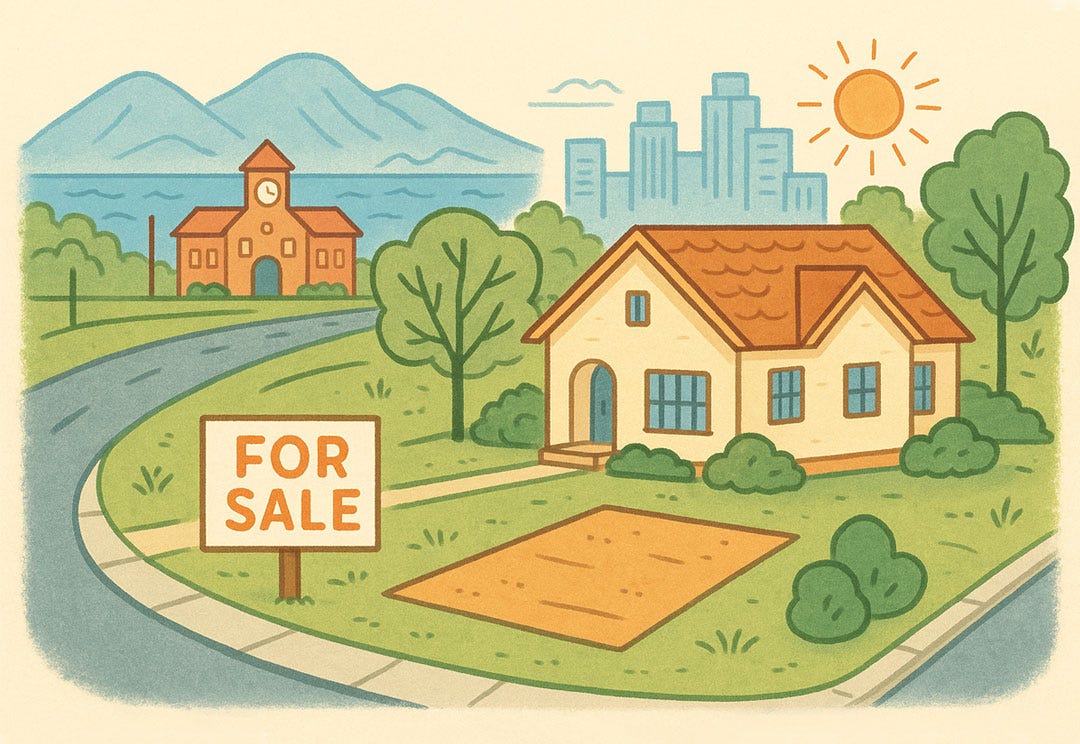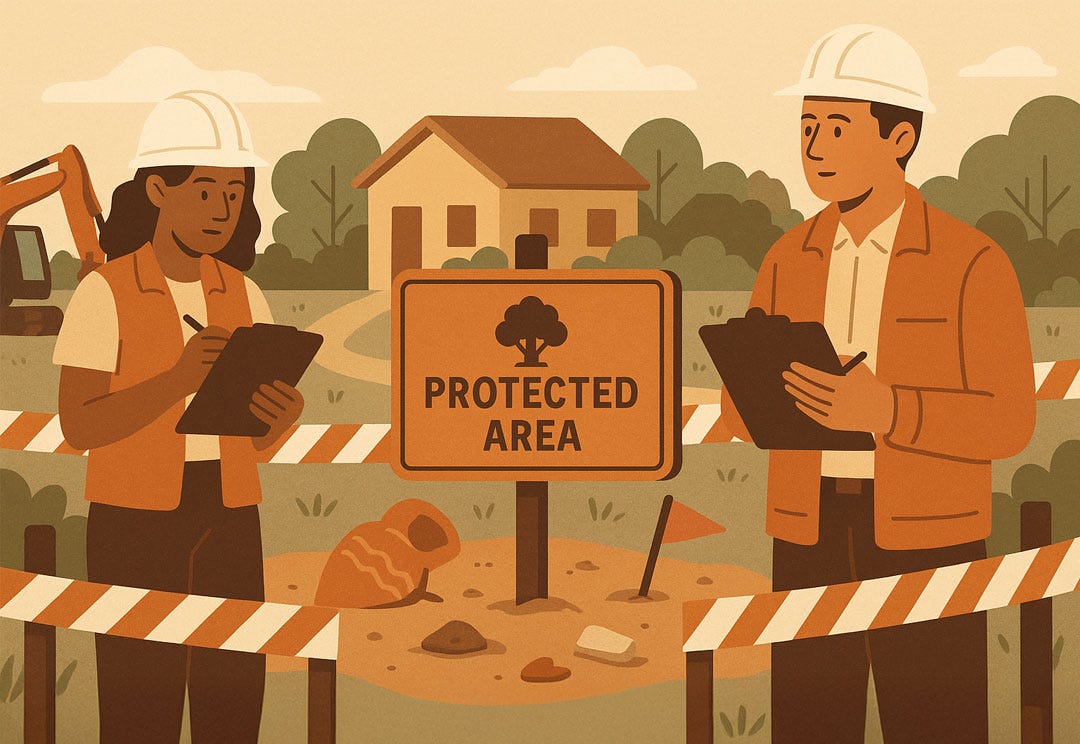Blog
Keep updated with recent real estate news.
Why Two Nearly Identical Lots Can Have Wildly Different Prices

Imagine strolling through a picturesque new development, or perhaps a quiet, established neighborhood. You come across two vacant lots, side-by-side, seemingly identical in size and shape. Your eyes scan the surroundings, and everything appears to be equal. Yet, when you inquire about the price, one lot is listed for significantly more than the other. “They look the same,” you might think, “why the huge price difference?”
This immediate thought is a common misconception in the world of real estate. While superficial similarities can certainly exist, the term “identical” is often misleading when it comes to land valuation. A multitude of hidden, complex, and often overlooked factors contribute to a lot’s true value, turning what appears to be a simple comparison into a nuanced investigation. In this post, we’ll journey through the obvious and less obvious factors that explain why two seemingly similar lots can have wildly different price tags.

The Obvious Suspects: Factors People Usually Consider
Let’s start with the factors most people intuitively understand when evaluating land:
- Location, Location, Location (Revisited): This age-old real estate mantra isn’t just about the city or neighborhood; it’s about the micro-location. How close is the lot to essential amenities like top-rated schools, bustling shopping centers, and critical hospitals? Is it nestled in a highly desirable, prestigious neighborhood, or is it on the fringe? The presence of stunning ocean, city, or mountain views can dramatically inflate a price, while proximity to a noisy highway or a commercial zone can depress it.
- Size and Shape: While two lots might be advertised as the same acreage, the devil is in the details. Is all of that land usable? A lot might be large on paper but include significant portions of steep slopes, unbuildable wetlands, or rocky terrain, effectively reducing its usable footprint. Similarly, an irregular or pie-shaped lot can be much harder and more expensive to build on than a simple rectangular one, impacting design flexibility and construction costs.
- Frontage: The amount of road frontage and the ease of access from a public road are also key. A lot with limited or awkward frontage can present challenges for driveways, utility connections, and overall accessibility.

The Hidden Variables: Less Obvious Factors That Drive Price Discrepancies
Beyond the visible attributes, a deeper dive reveals a host of “hidden variables” that profoundly influence a lot’s value:

A. Zoning and Land Use Regulations
This is often the most significant, yet least understood, factor. Zoning dictates what can actually be built on a piece of land.
- Permitted Uses: Is the lot zoned for residential, commercial, industrial, or agricultural use? A lot zoned for a single-family home will be valued differently than one allowing a multi-story apartment complex.
- Density Restrictions: How many units or buildings are permitted per acre? This directly impacts a developer’s potential profit.
- Setbacks & Height Limits: Regulations dictating how far a structure must be from property lines and how tall it can be built can severely limit development potential.
- Historic/Conservation Overlays: Special rules in protected areas can impose strict design guidelines or even prevent development entirely.
- Impact of Future Zoning Changes: The potential for a lot to be rezoned for a more profitable use can add speculative value, or conversely, the risk of downzoning can reduce it.

B. Topography and Soil Conditions
What lies beneath the surface and how the land slopes can lead to significant cost variations.
- Slope: Building on flat land is generally much cheaper than on a steep slope, which requires extensive grading, retaining walls, and specialized foundation work.
- Soil Composition: Is the soil rocky, clay-heavy, sandy, or expansive? Each type presents unique challenges and costs for foundations, drainage, and landscaping.
- Drainage Issues: Lots prone to poor drainage or flooding will require costly mitigation efforts to ensure a dry and stable foundation.
- Geological Hazards: Proximity to fault lines, landslide zones, or areas with liquefaction potential can make a lot unbuildable or require extremely expensive engineering solutions.

C. Access and Utilities
The availability and cost of essential services are paramount.
- Road Access: Is the road leading to the lot paved or unpaved? Is it a public road or a private one requiring easements and maintenance agreements?
- Utility Connections: The presence and proximity of municipal water, sewer, electricity, natural gas, and high-speed internet are crucial. A lot without these can incur tens of thousands, if not hundreds of thousands, in connection costs.
- Well/Septic Requirements: If municipal services aren’t available, the feasibility and cost of drilling a well and installing a septic system must be thoroughly investigated.

D. Environmental Factors & Hazards
Environmental concerns can halt development or add immense costs.
- Wetlands/Floodplains: Building on or near wetlands or within designated floodplains often comes with severe restrictions, expensive mitigation requirements, or outright prohibitions.
- Contamination: The presence of hazardous materials from previous uses (e.g., old industrial sites, buried fuel tanks) can necessitate costly environmental remediation.
- Protected Species/Habitats: The discovery of endangered flora or fauna on a lot can lead to strict building restrictions or the need for costly environmental impact studies.
- Noise/Air Pollution: Proximity to industrial zones, major highways, or airports can significantly detract from a lot’s desirability and value due to noise and air quality issues.

E. Market Dynamics & Development Potential
Beyond the physical attributes, the market itself plays a role.
- Supply and Demand: The current inventory of similar, buildable lots in the area directly impacts pricing.
- Development Trends: Is the area experiencing growth? Are there specific types of development (e.g., luxury homes, affordable housing) that are in high demand?
- Highest and Best Use: A professional appraisal will consider the “highest and best use”?—?what is the most profitable, legally permissible, and physically possible use for this specific lot?
- Timing of Sale: Broader economic conditions and the specific real estate market cycle at the time of listing can influence the final sale price.

F. Permitting and Regulatory Hurdles
The bureaucratic process can add significant time and expense.
- Ease of Permitting: How complex and time-consuming is it to obtain all necessary building permits? Some jurisdictions are notoriously difficult.
- Development Fees: Impact fees, school fees, utility connection fees, and other municipal charges can add substantial costs to a project.
- Homeowners Association (HOA) Rules: If the lot is part of an HOA, additional restrictions on design, materials, and even landscaping can influence its appeal and development costs.

G. Historical/Cultural Significance
Less common, but potentially impactful.
- Archaeological Finds: The potential for uncovering historical or archaeological artifacts can lead to costly delays and preservation requirements.
- Cultural Easements: Restrictions might be in place to preserve cultural sites or view-sheds.

Final Thoughts: Beyond the Surface
As you can see, valuing a vacant lot is an intricate process that goes far beyond simply looking at its size and location. What appears to be an “identical” lot on the surface can hide a myriad of factors that dramatically impact its buildability, usability, and ultimately, its market value.
For any prospective buyer, the key takeaway is the absolute importance of due diligence. Never assume. Hire experts: a surveyor to understand boundaries and topography, an environmental consultant to check for hazards, a real estate attorney to review easements and restrictions, and an experienced real estate agent who understands local zoning and market nuances. A “good deal” isn’t always about the lowest price; it’s about understanding the full picture of what you’re buying, the challenges it presents, and its true potential. By looking beyond the surface, you can make an informed decision and avoid costly surprises down the road.



